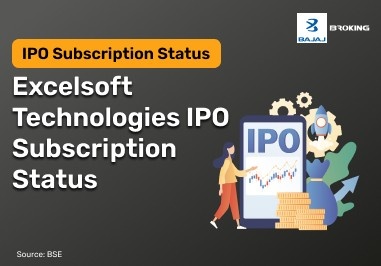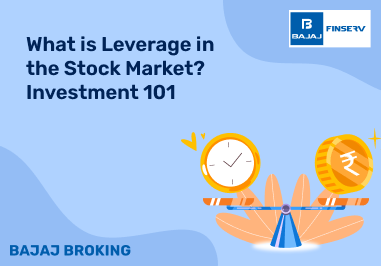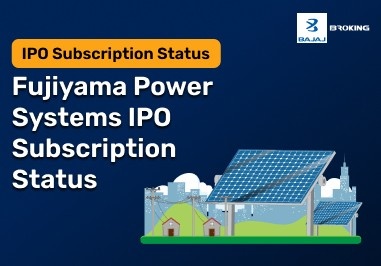Top 5 Long Term Stocks in India You Should Know
The following table lists the largest long term stocks in India based on market capitalisation. It includes stock price data, annual price range, and sector classification.
Company Name
| Last Price (₹)
| % Change
| 52-Week High (₹)
| 52-Week Low (₹)
| Market Cap (₹ crore)
| Sector
|
Reliance
| 1,219.30
| 2.84
| 1,608.95
| 1,115.55
| 16,50,002.23
| Oil Exploration and Production
|
HDFC Bank
| 1,806.60
| 2.33
| 1,880.00
| 1,430.15
| 13,82,450.37
| Bank – Private
|
TCS
| 3,232.30
| -0.43
| 4,585.90
| 3,060.25
| 11,69,474.43
| IT Services & Consulting
|
Bharti Airtel
| 1,757.30
| 2.42
| 1,778.95
| 1,201.30
| 10,19,265.15
| Telecommunication – Service Provider
|
ICICI Bank
| 1,313.30
| 0.98
| 1,372.50
| 1,048.35
| 9,35,384.61
| Bank – Private
|
Source: MoneyControl
Overview of Long Term Stocks
This table summarises the top long term stocks in India using only the company names and market capitalisation, offering a quick view of their relative size.
Company Name
| Market Cap (₹ crore)
|
Reliance
| 16,50,002.23
|
HDFC Bank
| 13,82,450.37
|
TCS
| 11,69,474.43
|
Bharti Airtel
| 10,19,265.15
|
ICICI Bank
| 9,35,384.61
|
Source: MoneyControl
Reliance
Reliance Industries Ltd operates across oil and gas exploration, refining, petrochemicals, and retail. It is India's largest private sector company by revenue and market capitalisation. The stock is listed on both NSE and BSE.
The following table captures market and operational metrics for Reliance Industries Ltd. as of April 14, 2025.
Metric
| Value
|
Market Capitalisation
| ₹16,49,528 crore
|
Last Traded Price
| ₹1,218.95
|
52-Week High / Low
| ₹1,608.80 / ₹1,114.85
|
TTM EPS
| ₹51.13 (-0.62% YoY)
|
TTM PE
| 23.84
|
Book Value Per Share
| ₹605.55
|
P/B Ratio
| 2.02
|
Dividend Yield
| 0.82%
|
1-Year Performance
| -17.62%
|
ROE
| 8.77%
|
Debt-to-Equity Ratio
| 0.41
|
Sector PE
| 15.68
|
Beta
| 1.16
|
Source: MoneyControl
Highlights:
177.34% 20-day average delivery rate
Included in all major indices (NIFTY 50, Sensex, BSE 500)
Face value of ₹10 per share
HDFC Bank
HDFC Bank Ltd offers a range of commercial banking services, including retail, wholesale, and treasury operations. It serves customers across segments and is part of the NIFTY 50, Sensex, and BSE 500 indices. The stock is listed on both NSE and BSE.
The table below provides valuation, performance, and operational metrics for HDFC Bank as of April 14, 2025.
Metric
| Value
|
Market Capitalisation
| ₹13,82,565 crore
|
Last Traded Price
| ₹1,806.75
|
52-Week High / Low
| ₹1,880.00 / ₹1,426.80
|
TTM EPS
| ₹90.93 (+7.99% YoY)
|
TTM PE
| 19.87
|
Book Value Per Share
| ₹625.39
|
P/B Ratio
| 2.89
|
Dividend Yield
| 1.08%
|
1-Year Performance
| +16.67%
|
ROE
| 14.03%
|
NIM
| 3.21%
|
Sector PE
| 19.29
|
Beta
| 0.90
|
Source: MoneyControl
Highlights:
48.82% 20-day average delivery rate
Face value of ₹1 per share
Included in all major indices (NIFTY 50, Sensex, BSE 100, BSE 500)
TCS
Tata Consultancy Services (TCS) is a global IT services and consulting company offering software development, digital transformation, and business outsourcing services. It operates across sectors such as telecom, BFSI, and retail, and is listed on NSE and BSE.
The table below summarises valuation and performance metrics for Tata Consultancy Services as of April 14, 2025.
Metric
| Value
|
Market Capitalisation
| ₹11,69,184 crore
|
Last Traded Price
| ₹3,231.50
|
52-Week High / Low
| ₹4,592.25 / ₹3,056.05
|
TTM EPS
| ₹134.78 (+6.22% YoY)
|
TTM PE
| 23.98
|
Book Value Per Share
| ₹280.52
|
P/B Ratio
| 11.52
|
Dividend Yield
| 2.26%
|
1-Year Performance
| -18.12%
|
ROE
| 50.73%
|
Debt-to-Equity Ratio
| 0.00
|
Sector PE
| 28.30
|
Beta
| 0.65
|
Source: MoneyControl
Highlights:
100.61% 20-day average delivery rate
Promoter holding: 71.77% (unchanged in Dec 2024)
Zero-debt capital structure
Bharti Airtel
Bharti Airtel Ltd is a major telecom services provider with operations in India and Sri Lanka. It has been a key player in expanding mobile and broadband networks, and operates in the wireless, fixed-line, and digital TV spaces. The stock is traded on NSE and BSE.
This table presents select market and financial indicators for Bharti Airtel as of April 14, 2025.
Metric
| Value
|
Market Capitalisation
| ₹10,18,859 crore
|
Last Traded Price
| ₹1,756.60
|
52-Week High / Low
| ₹1,779.00 / ₹1,210.35
|
TTM EPS
| ₹42.42 (+229.51% YoY)
|
TTM PE
| 41.41
|
Book Value Per Share
| ₹150.17
|
P/B Ratio
| 11.70
|
Dividend Yield
| 0.46%
|
1-Year Performance
| +45.84%
|
ROE
| 7.39%
|
Debt-to-Equity Ratio
| 1.50
|
Sector PE
| 180.85
|
Beta
| 0.95
|
Source: MoneyControl
Highlights:
86.15% 20-day average delivery rate
Included in NIFTY 50, Sensex, and BSE 500
Face value of ₹5 per share
ICICI Bank
ICICI Bank Ltd is one of India’s largest private sector banks, offering diversified services including loans, deposits, cards, insurance, and demat account facilities. It operates under a universal banking model, serving retail and institutional clients. The stock is listed on both NSE and BSE.
The table below summarises selected valuation and operating metrics for ICICI Bank as of April 14, 2025.
Metric
| Value
|
Market Capitalisation
| ₹9,34,209 crore
|
Last Traded Price
| ₹1,311.65
|
52-Week High / Low
| ₹1,373 / ₹1,048.10
|
TTM EPS
| ₹70.56 (+9.56% YoY)
|
TTM PE
| 18.59
|
Book Value Per Share
| ₹393.27
|
P/B Ratio
| 3.34
|
Dividend Yield
| 0.76%
|
1-Year Performance
| +18.23%
|
ROE
| 17.49%
|
NIM
| 3.61%
|
Sector PE
| 19.29
|
Beta
| 0.98
|
Source: MoneyControl
Highlights:
83.12% 20-day average delivery rate
Included in NIFTY 50, Sensex, BSE 500, and BSE 100
Face value of ₹2 per share
How To Invest In Long Term Stocks?
Investing in long-term stocks involves several steps:
1. Open Accounts: Start by opening a demat account and a trading account to manage investments.
2. Research Companies: Evaluate financial performance, growth potential, and industry trends.
3. Diversify Portfolio: Spread investments across sectors to minimize risks.
4. Monitor Investments: Regularly review performance and rebalance as needed.
5. Use Investment Tools: Leverage tools like a brokerage calculator to estimate costs.
Staying updated on opportunities such as an upcoming IPO, while avoiding impulsive decisions driven by market rumors, is crucial for success.
Conclusion
Long-term stocks offer a strategic approach to wealth creation by providing stable growth and potential for higher returns over time. They are particularly beneficial for investors seeking to capitalize on compounding returns and lower tax liabilities. By diversifying portfolios and focusing on companies with strong fundamentals, investors can navigate market fluctuations effectively. Unlike intraday trading, which focuses on short-term gains, long-term investing provides a stable approach to wealth accumulation. Staying informed about market trends and opportunities, such as an upcoming IPO, can further enhance investment decisions. Additionally, leveraging tools like MTF can help optimize investment strategies while maintaining a demat account and trading account for efficient management.
Other Popular Stocks in India
In addition to companies ranked by market capitalisation, several other widely tracked stocks hold significant long-term interest due to their market positioning, strategic initiatives, and sector relevance.
State Bank of India (SBI) remains central to India’s banking system, supported by its extensive reach, digital infrastructure, and ongoing role in financial inclusion.
Infosys continues to be a key player in global IT services, known for its innovation in cloud, AI, and digital transformation across industries.
Hindustan Unilever (HUL) stands out in the FMCG sector with a strong brand portfolio and resilience across market cycles.
ITC is recognised for its diversified business model across FMCG, agribusiness, and hospitality, supported by a wide distribution network.
Larsen & Toubro (L&T) maintains a strong presence in India’s infrastructure development through its engineering and project execution capabilities.
Kotak Mahindra Bank is known for its diversified services and digital-first approach within India's evolving financial ecosystem.
Sun Pharma plays a significant role in India’s pharmaceutical sector, with a global footprint and broad therapeutic coverage.
These companies continue to attract market attention due to their scale, strategic relevance, and contributions across diverse sectors.















